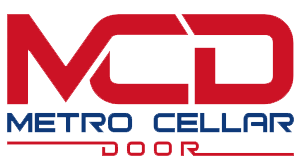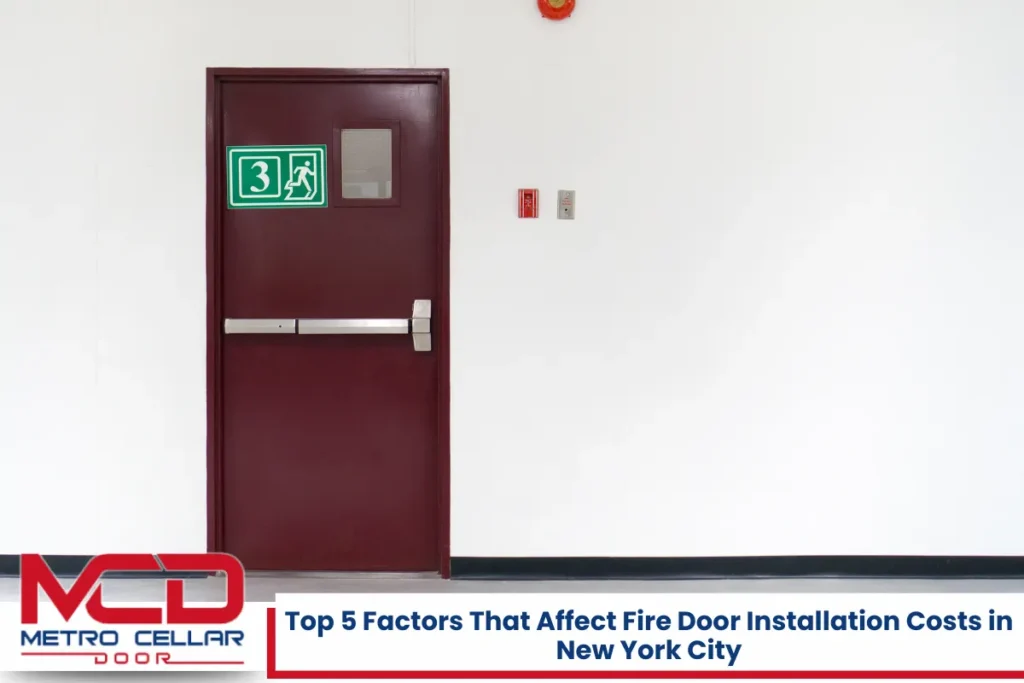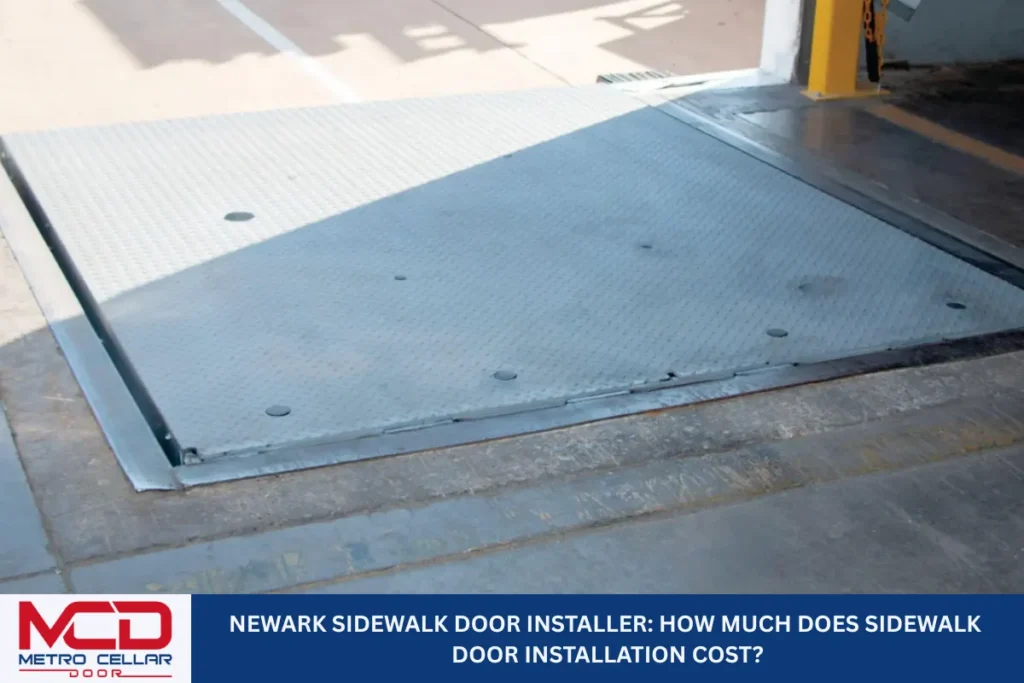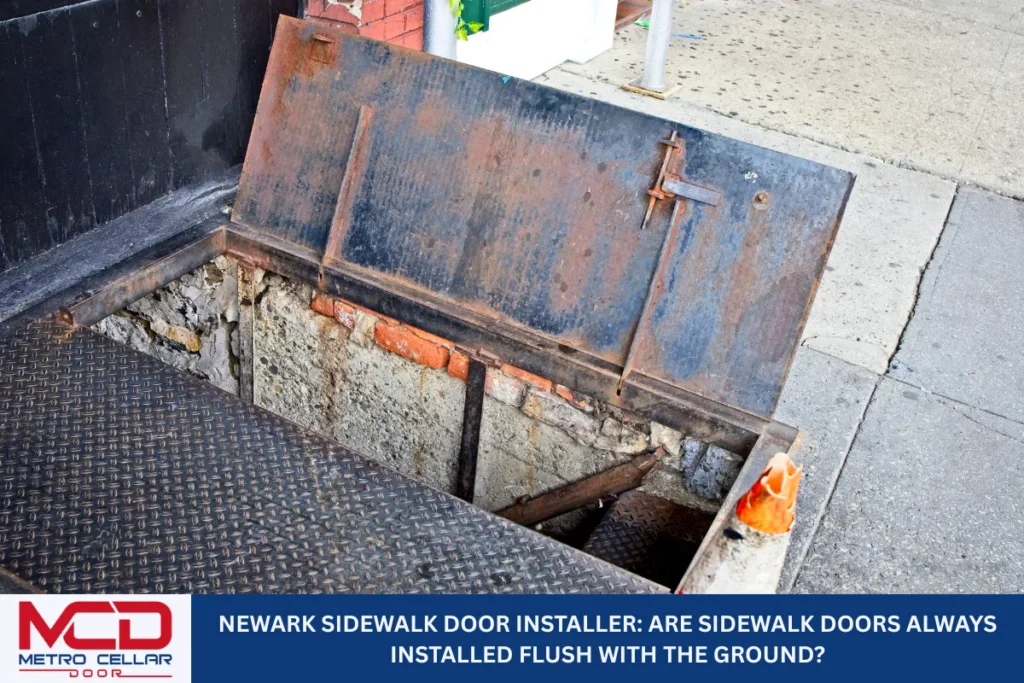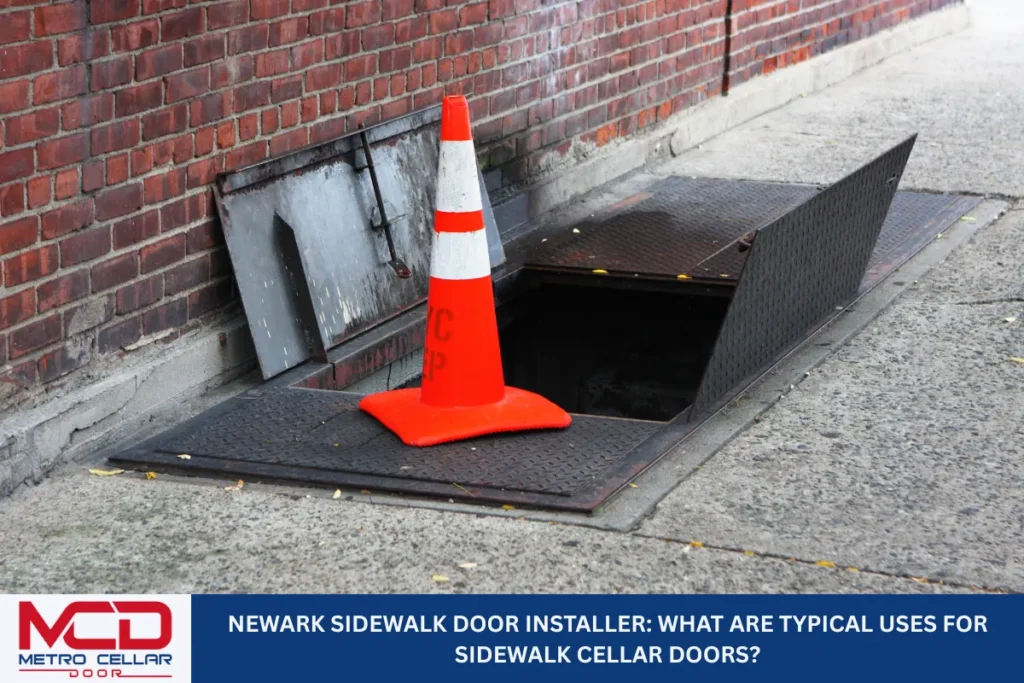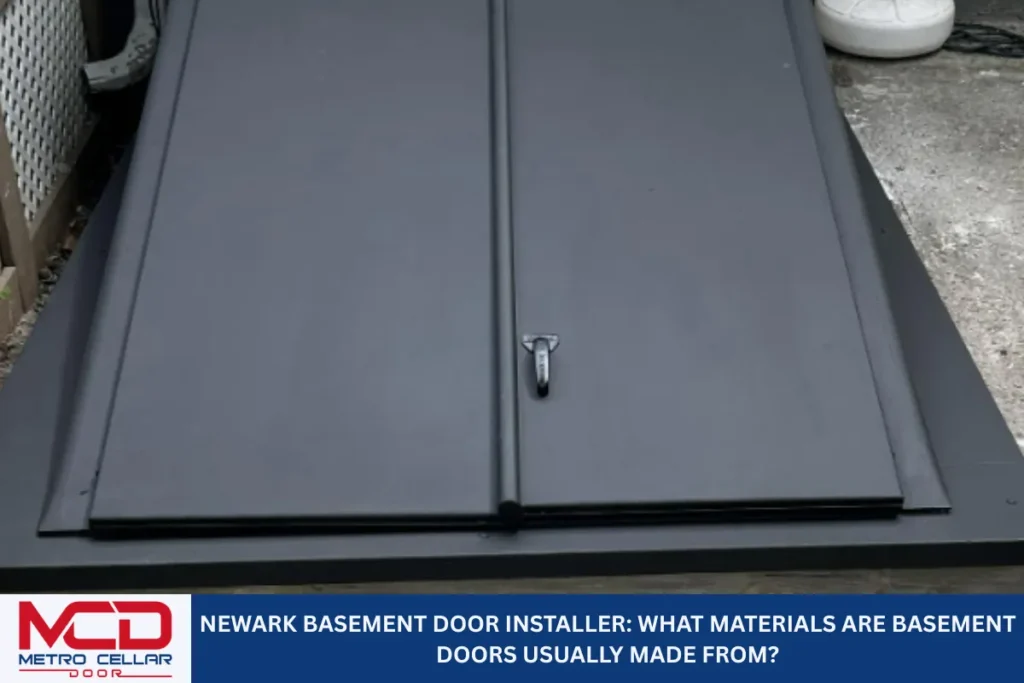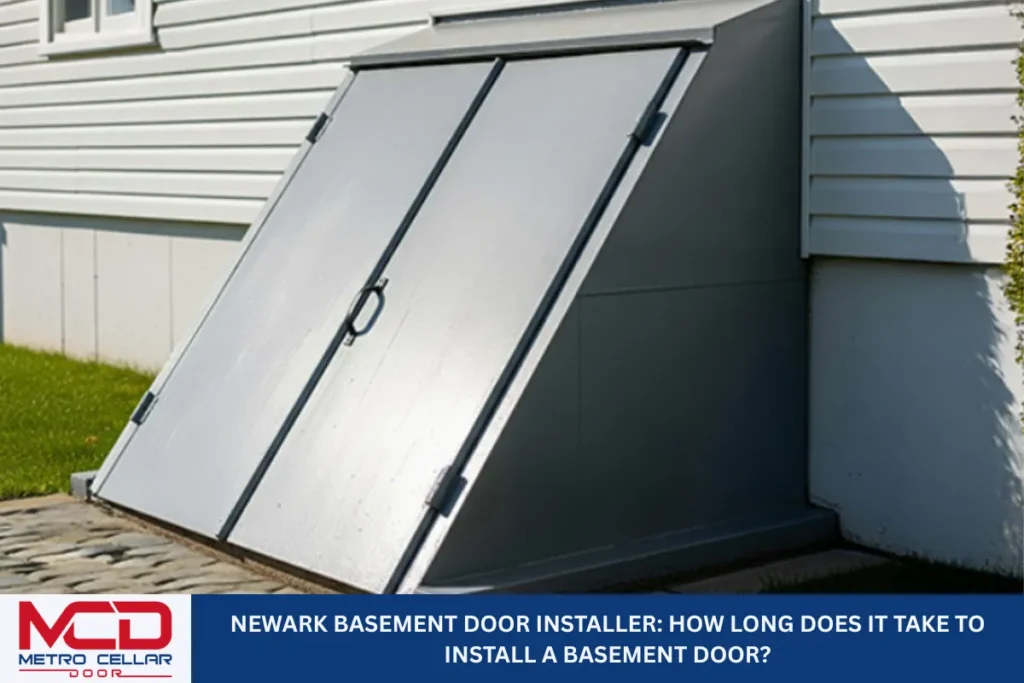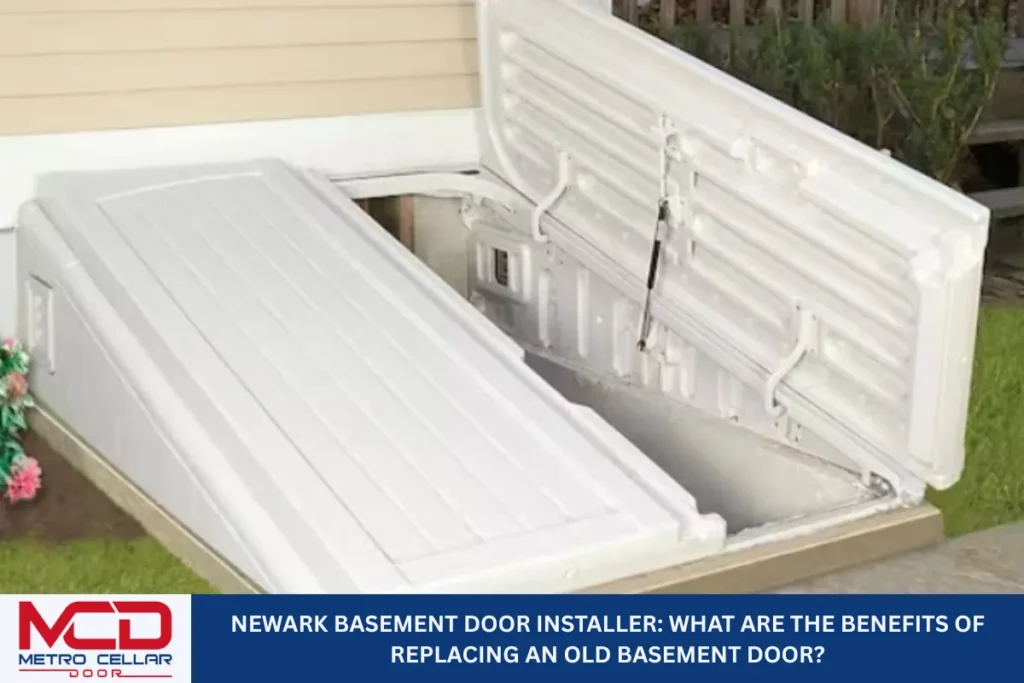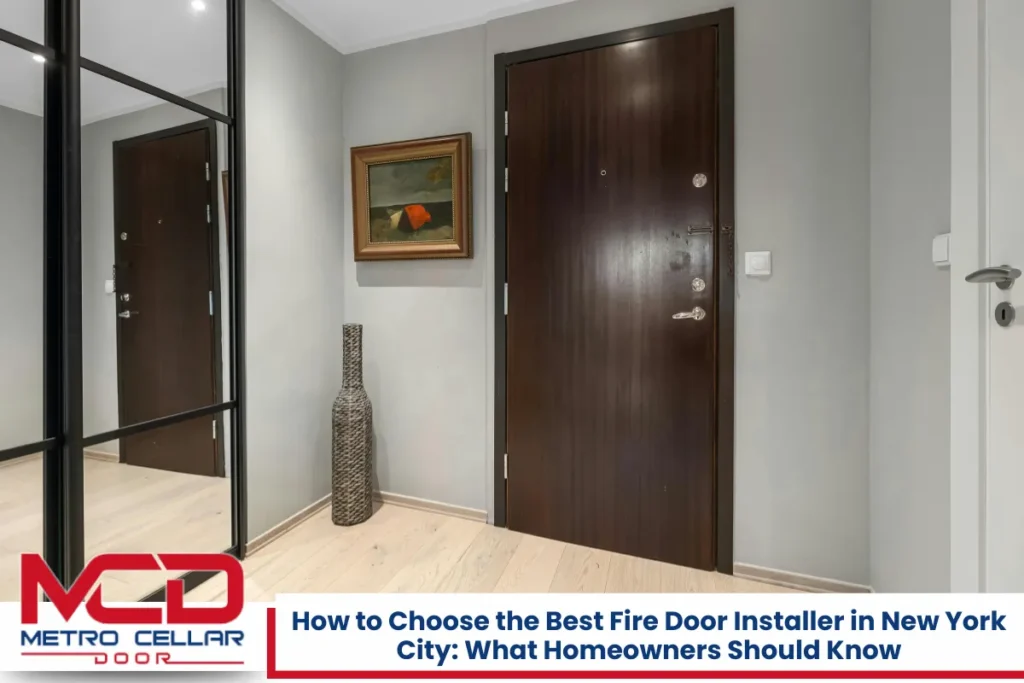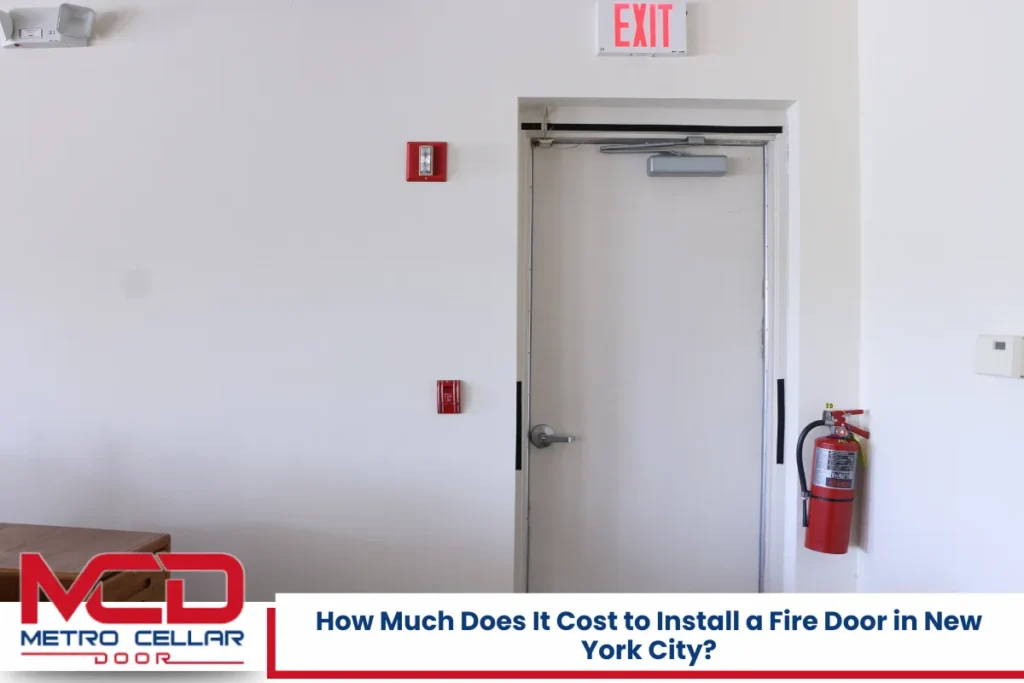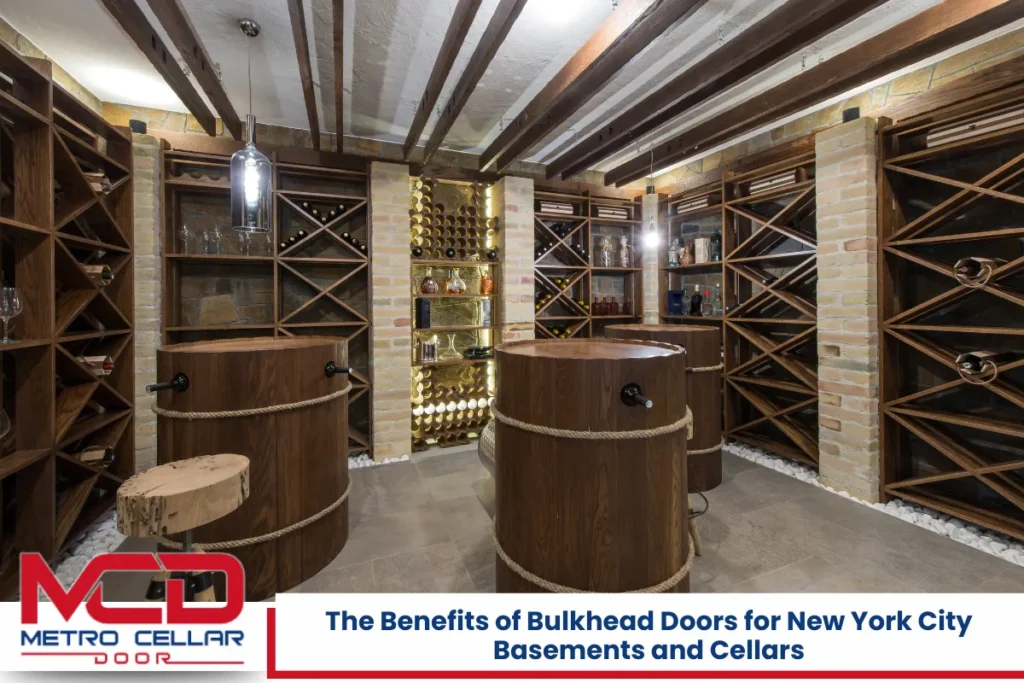The cost of installing a fire-rated door can vary based on multiple variables; however, hiring a fire door installer in New York City adds layers of complexity due to strict local codes, high labor rates, and the unique building styles prevalent in the area. This guide provides a comprehensive examination of the five key factors that influence fire door installation costs in NYC, ranging from the material and fire rating of the door to site conditions and local labor expenses.
Fire doors play a critical role in enhancing building safety and ensuring compliance with legal requirements. In a city like New York, where buildings are closely packed together and fire safety enforcement is stringent, understanding the costs involved with installation is essential for homeowners, property managers, and business owners alike.
Understanding Fire Door Installation in NYC
Fire door installation in New York City extends beyond simply installing a door. It’s a safety necessity enforced by law and a vital part of a building’s fire protection strategy. These specialized doors are engineered to contain fire and smoke, allowing occupants more time to exit safely and protecting the building’s structural integrity.
Fire doors are regulated under NYC’s Building Code and the Fire Code, both of which follow strict national standards and local enforcement policies. Installers must ensure the doors meet the necessary fire-resistance ratings, include approved hardware, and are self-closing to comply with city regulations.
In most NYC buildings, fire doors are found in:
- Apartment entrances
- Stairwells and fire exits
- Elevator lobbies
- Commercial hallway doors
- Storage and mechanical rooms
Getting this installation wrong can result in failed inspections, hefty fines, or worse—compromised safety in the event of an emergency.
1. Type and Rating of Fire Door

Material Choices and Their Impact on Cost
The type of material used in a fire door has a major effect on the overall cost. In NYC, the most common materials include steel, wood, and glass. Each has its own pros, cons, and pricing tiers.
- Steel fire doors are highly durable, ideal for commercial and industrial use. They offer strong fire resistance but come at a higher material and labor cost due to their weight and the difficulty of installation.
- Wood fire doors are often used in residential buildings. These are more affordable but may offer lower fire resistance ratings compared to steel.
- Fire-rated glass doors are typically custom-built and found in modern commercial spaces. They provide visibility and aesthetics, but are by far the most expensive option due to material and fabrication needs.
The complexity of the material also affects labor. Steel doors require specialized tools and handling, which adds time and cost to the installation process.
Fire Resistance Ratings and NYC Requirements
Fire door ratings refer to the amount of time a door can withstand fire exposure, typically measured in minutes: 20, 45, 60, 90, or 180 minutes. In New York City, specific locations within a building are assigned particular ratings based on their risk level and the building’s classification.
- Residential unit entry doors often require a 20-minute rating.
- Corridor doors in commercial buildings typically demand 45- to 90-minute ratings.
- Stairwell and elevator lobby doors are required to meet higher thresholds, often exceeding 90 minutes of fire resistance.
The higher the rating, the more expensive the door will be. This includes both the door material and the associated hardware, which must also meet fire-resistance standards.
2. Building Type and Code Requirements
Differences Between Residential and Commercial Installations
The nature of the building being fitted with fire doors greatly affects pricing. Residential installations are usually more straightforward, especially when replacing existing doors in apartment buildings. These jobs typically involve standard door sizes and fewer complications with infrastructure.
Commercial projects, on the other hand, involve higher fire safety standards and more extensive hardware. Office buildings, schools, restaurants, and hospitals in NYC must comply with detailed zoning, ADA accessibility, and fire protection laws. This can substantially increase both material and labor costs.
Larger commercial buildings also tend to require more doors and a wider variety of door ratings, each with its own pricing structure. Multiple permits and phased installations may be needed depending on the scope of work.
Compliance with Local Building Codes
The NYC Building Code specifies the type of doors required in specific areas, including their rating, duration, signage, and installation technique. These codes often evolve in response to new safety standards, and staying compliant requires working with licensed professionals who are up-to-date with every revision.
Any mistakes in fire door installation can lead to violations, stop-work orders, or delays in receiving Certificates of Occupancy—especially during inspections by the NYC Department of Buildings (DOB) or the Fire Department of New York (FDNY).
Code compliance often requires:
- Self-closing mechanisms
- Fire-labeled frames and doors
- Smoke gasketing
- Tamper-proof hardware
All of these must be included in your budget when planning for installation.
3. Labor Costs and Installer Expertise
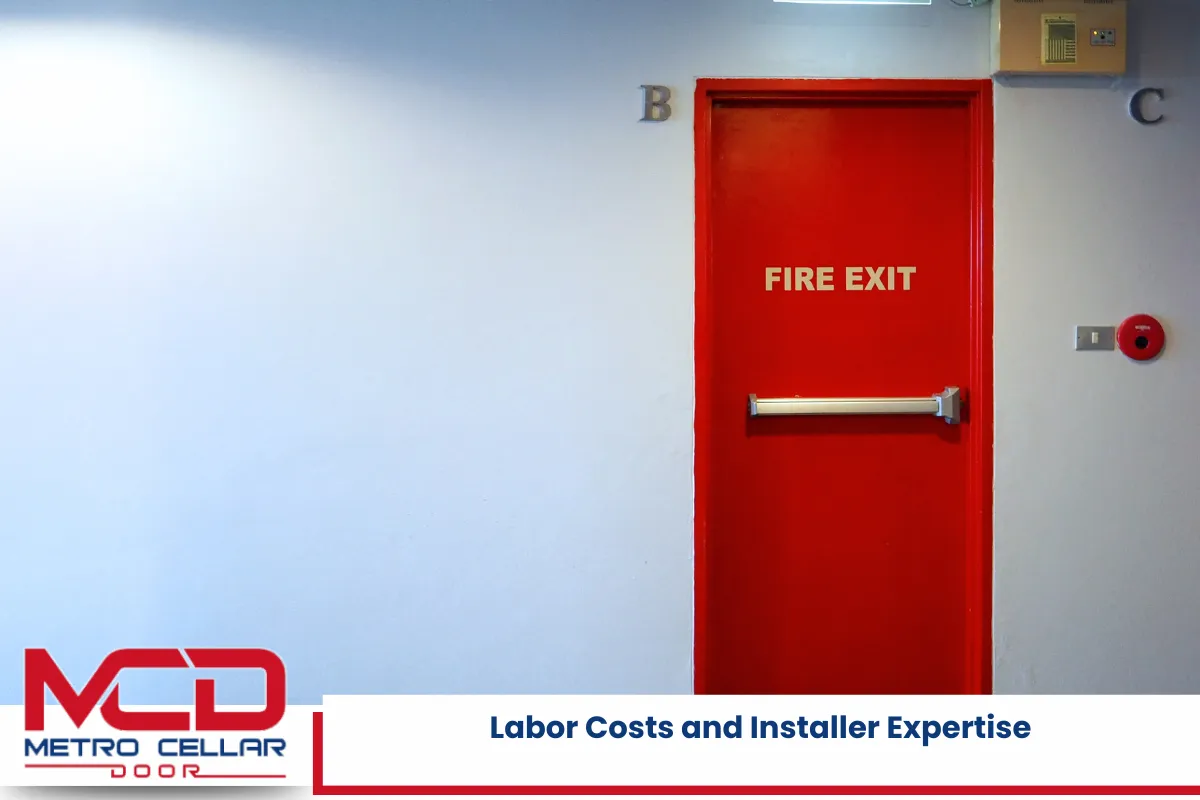
Certified Installers and Their Value
Hiring a licensed and experienced fire door installer is essential in NYC, not only for proper installation but also for ensuring compliance with inspections. These professionals understand the intricacies of the building code and ensure that each part of the door assembly meets UL standards and local requirements.
Expert installers handle:
- Removing and disposing of old doors
- Installing hardware that meets fire codes
- Adjusting frames and sealing for smoke control
- Providing documentation and labels for inspection
This level of skill doesn’t come cheap, but it’s necessary to ensure the door functions as intended during an emergency.
Labor Pricing in New York City
The cost of labor is higher in NYC due to the cost of living, high demand for skilled tradespeople, and union regulations in many commercial buildings. On average, labor for fire door installation ranges from $100 to $175 per hour, depending on the scope and location of the project.
Additional costs can arise if:
- The building is occupied, and work must be scheduled off-hours
- Access is difficult, such as in pre-war walkups or tight utility rooms
- Multiple crews or permits are needed for larger installations
Labor can represent over 50% of the total cost in complex projects.
4. Hardware and Customization Needs
Standard vs. Specialized Hardware
Basic fire doors are equipped with minimal components, including closers, hinges, and latches. However, NYC building regulations often require advanced hardware that significantly increases cost. Examples include:
- Panic exit devices for emergency exits
- Electric strikes for access control systems
- Magnetic hold-open connected to fire alarm systems
- Smoke seals and intumescent strips
Each component must meet UL standards and be tested as part of a complete door assembly. Upgrades may also be required during inspections or changes in building usage.
Custom Features and Fabrication
Many buildings, especially older ones in Manhattan and Queens, have non-standard openings. This requires doors and frames to be custom-fabricated, which extends the lead time and increases the cost.
Customization can include:
- Odd door sizes (e.g., 32×84 or 42×90)
- Decorative fire-rated glass inserts
- Custom-painted or wrapped finishes
- Unique locking mechanisms
Even small adjustments—such as reinforcing a frame to hold a heavy steel door—can require structural changes that add to both time and expense.
5. Site Conditions and Accessibility
Installation Challenges in NYC Buildings
New York buildings are famous for their age, density, and complex layouts. These factors can lead to unexpected delays and additional expenses during the installation of fire doors.
Common issues include:
- Narrow hallways or staircases
- Non-standard door frame openings
- Obstacles behind walls (pipes, wiring)
- Shared walls between units or businesses
Each of these elements can impact the labor required and may even affect whether specialized equipment is needed to complete the job safely.
Permit Requirements and Preparation Work
Most fire door projects in NYC—especially in commercial or multifamily buildings—require permits from the DOB. Filing fees, processing time, and legal paperwork can add both cost and delays.
Prep work may include:
- Patching or reframing walls
- Removing old frames embedded in concrete
- Coordinating with building management or tenants
- Fire-stopping penetrations
Permit-related work and site preparation can add thousands of dollars to your final bill if not anticipated during the planning phase.
Practical Ways to Lower Fire Door Installation Costs in NYC
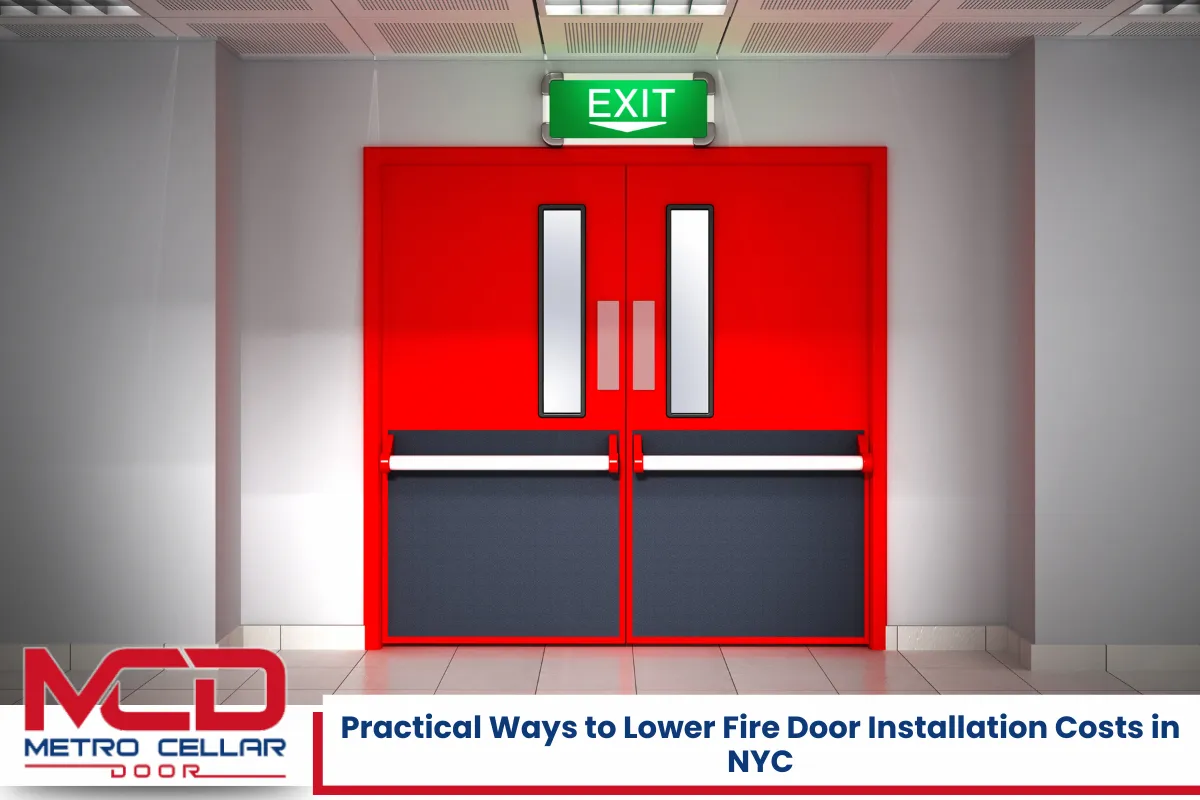
Although costs are high in NYC, there are smart ways to keep fire door installation within your budget:
- Stick to standard sizes and configurations – Custom builds are more expensive and slower to install.
- Request itemized estimates – This allows you to see exactly what you’re being charged for, including labor, hardware, and materials.
- Choose materials that match your code requirements, not exceed them – A 90-minute fire door isn’t necessary where a 45-minute one is sufficient.
- Consolidate work – If you’re upgrading multiple doors in a building, grouping them into a single project can save on labor and travel charges.
- Verify warranties and maintenance – Proper care after installation can extend the life of your fire doors, reducing future costs.
How to Choose a Qualified Fire Door Installer in NYC
The person or team you hire can make or break your fire door project. To ensure quality, choose an installer with:
- Experience working in all five boroughs
- Familiarity with NYC building and fire codes
- A portfolio of successful installations
- Transparent pricing and detailed contracts
- Valid licenses, insurance, and certifications
Read reviews, ask for references, and verify that they have a proven track record of consistently passing inspections.
Final Thoughts on Fire Door Installation Costs in NYC
Understanding the factors that affect fire door installation costs in New York City can help you plan effectively, avoid unnecessary expenses, and ensure a smooth and compliant installation. From door type and fire rating to labor and building conditions, each detail plays a role in shaping your final price.
Before starting your project, take the time to research certified installers, understand your building’s code requirements, and review all cost components carefully. A successful fire door installation not only meets local regulations but also strengthens the overall safety of your building.
NYC Fire Door Installer – Metro Cellar Door Bilco Pro
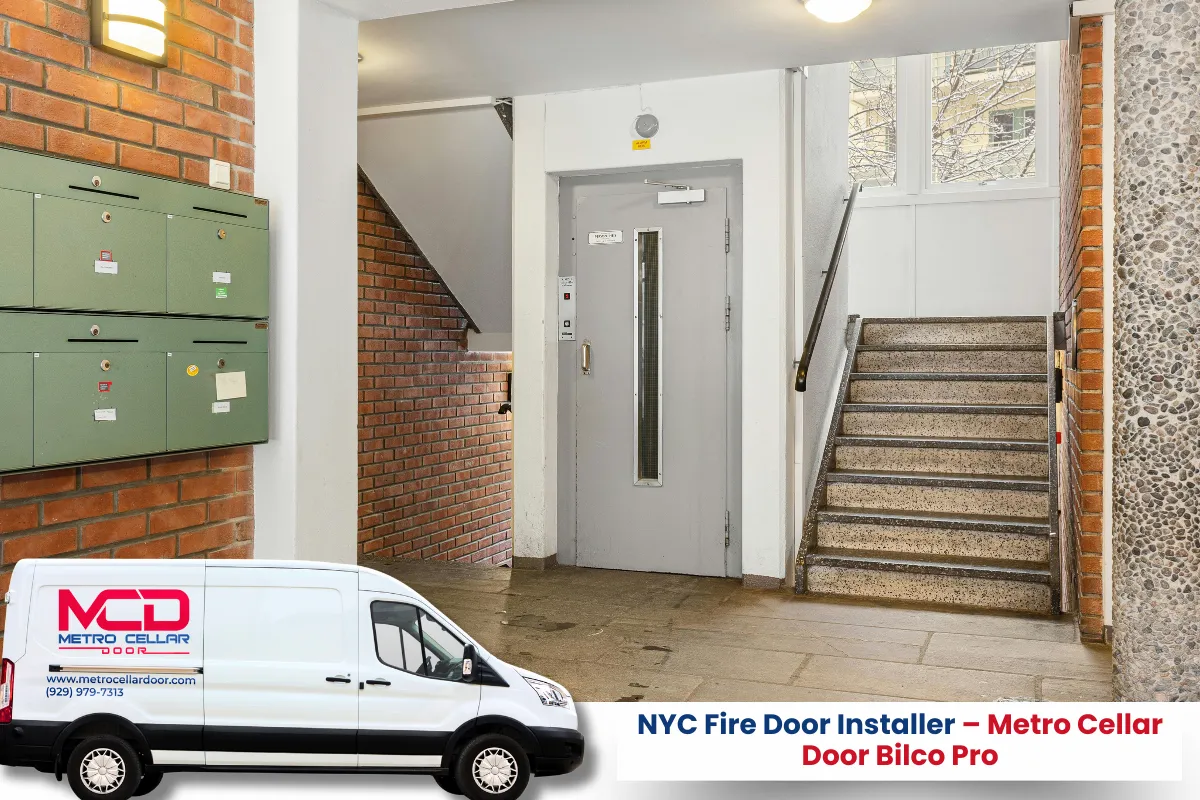
Metro Cellar Door Bilco Pro is a trusted name across New York City, offering reliable and code-compliant fire-rated door installations for both residential and commercial properties. Selecting the right fire door installer can make a significant difference in terms of cost, compliance, and long-term safety. Our team ensures that every project meets strict NYC regulations while maintaining high-quality workmanship.
We handle all types of door installations, including Bilco doors and sidewalk cellar doors, with experience navigating the unique challenges of NYC buildings. Our services cover Brooklyn, Queens, Manhattan, Staten Island, The Bronx, Long Island, Westchester, and Northern New Jersey. With free estimates, custom fabrication, and competitive pricing, call us today at (929) 979-7313 to get started!
Frequently Asked Questions About Fire Door Installation in NYC
1. What is the required fire rating for apartment entrance doors in New York City?
In New York City, the required fire rating for apartment entrance doors depends on the type of building and occupancy classification. According to the NYC Building Code and Fire Code:
- Multifamily buildings (e.g., apartments, co-ops) must have entrance doors with a minimum 20-minute fire resistance rating.
- Doors leading to stairwells or shared hallways may require ratings of 45 to 90 minutes, depending on the building’s height and layout.
Additional requirements include:
- Self-closing mechanisms (to contain smoke and fire)
- Smoke seals or intumescent strips
- Approved labeling to confirm the door meets UL fire standards
The FDNY and Department of Buildings (DOB) may enforce stricter ratings for buildings classified as “non-combustible” or “high occupancy.” Always consult with a certified fire door installer to ensure the door selected complies with NYC Local Law 111 and current Fire Safety Guidelines.
2. Can I replace a fire-rated door with a regular door in my apartment?
No, replacing a fire-rated door with a standard, non-rated door in New York City is not allowed and may violate building codes. The NYC Fire Code and Building Code mandate that:
- All fire-rated doors must be replaced with doors that have equal or greater fire resistance ratings.
- The door assembly (including frame, hardware, and closer) must be certified as a complete fire-rated system.
- Replacing a fire-rated door with a regular door can:
- Void your building’s fire safety compliance
- Result in fines during inspections
- Put lives at risk in case of fire
If you live in a co-op or condo, your board may also require approval for door replacement. Always verify with your building management and consult with a licensed fire door installer before making any changes. Permits may be needed depending on the scope of the work.
3. How do I know if my fire door is code-compliant in NYC?
To determine if your fire door is compliant with NYC building and fire codes, check for the following:
- Certification Label: A UL or WH (Warnock Hersey) label should be affixed to the edge of the door or frame, indicating the fire-resistance rating of the door or frame.
- Self-Closing Device: NYC law requires all fire-rated doors, especially in apartment buildings, to have self-closing mechanisms.
- Intumescent Seals: These seals expand under heat to block smoke and flames. They’re often required in newer installations.
- Proper Frame and Hardware: The door frame and all hardware (hinges, locks, closers) must be tested as part of a complete assembly.
If any part of the door is missing these components or the label is damaged or painted over, the door may be non-compliant. For complete accuracy, schedule an inspection with a certified NYC fire door installer or fire protection professional.
4. Are fire doors required in single-family homes in NYC?
In most cases, fire doors are not required in single-family homes in New York City unless:
- The home has an attached garage: A fire-rated door (usually 20-minute rated) is required between the garage and living area.
- The home is part of a multi-unit dwelling, such as a two-family house or row house, with a shared wall.
- The home features a legal basement apartment, which must comply with fire separation requirements.
While not mandatory, installing fire-rated doors in certain locations can significantly improve home safety. Recommended areas include:
- Between the kitchen and the other rooms
- Basement or attic access points
- Utility and boiler rooms
Even when not legally required, many insurance companies offer discounts on premiums if a home includes fire-rated features. It’s always wise to consult your local DOB or a licensed installer for guidance based on your specific property.
5. How much does it cost to install a fire-rated door in NYC?
The cost of installing a fire-rated door in New York City varies depending on several factors, including materials, labor, customization, and site conditions. On average:
- Basic wood fire doors (20–45-minute rated): $400–$800 (including materials and labor)
- Steel fire doors (60–90-minute rated): $700–$1,500+
- Custom or glass fire doors: $1,000–$2,500+
Additional costs may include:
- Permits and inspection fees: $100–$500
- Hardware upgrades: $100–$400 (closers, locks, seals)
- Custom fabrication or framework: $300+
Labor in NYC typically ranges from $100 to $175 per hour, especially in union buildings or commercial settings. Site accessibility—such as walkups or narrow stairwells—can also affect the final price.
Always request a detailed, itemized estimate from a certified fire door installer to avoid surprise fees and ensure code compliance.
Read more: How to Choose the Best Fire Door Installer in New York City: What Homeowners Should Know
